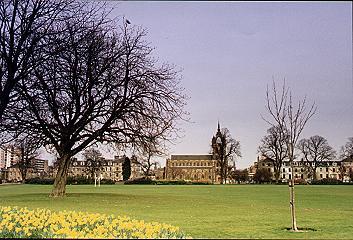

|
|||||||||
|
|
|
|
|
|
|
|
|
|
|
|
July 6th 1651 |


|
Cromwell visits Perth South Inch at Perth. Picture by Chas Webb When, therefore, the King ordered the people of Perth to march out to the South Inch to choose a hundred men to fight against Cromwell, the order was obeyed with genuine enthusiasm. Under the command of Andrew Butter captain, John Davidson lieutenant, and James Dyke ensign, the contingent marched to Dunfermline where they joined another three thousand men under Sir John Brown of Menstrie. Unfortunately the battle with Cromwell’s troops under Lambert proved disastrous with sixteen hundred of King Charles’ men killed. What remained of the Perth force returned to the city and Lieutenant Davidson shut the gates anticipating an attack by the Cromwellian forces. Shortly afterwards the Royal army and the King marched from Stirling to England. When Cromwell and his army did reach Perth, John Davidson “a bold and enterprising gentleman ordered carts to drive up and down the streets and a drum to beat continually through the town and at all the ports to deceive the English generals.” In spite of these stratagems, when Cromwell offered honourable terms for surrender the gates were immediately opened and Cromwell and his men entered the town. They were met by Provost Andrew Grant and the officers were taken to John Davidson’s house. Cromwell asked the Provost how, in his defenceless situation he proposed to keep him at the gates. The Provost simply answered that they designed to stand out until they heard that the King was in England. Cromwell with a sneer, called him a silly body and beneath his notice; but said if he had time he would hang Davidson. Immediately after Cromwell’s departure from Mr Davidson’s house, the side wall fell down and Davidson said he wished it had fallen a quarter of an hour sooner, “though he, Samson-like, had perished in the ruins.” John Davidson was not hung by Cromwell and he later became a public notary and fiscal of court. Perth continued to be occupied, for most of the time under the command of General Monk, until after the death of Cromwell in 1658. |

